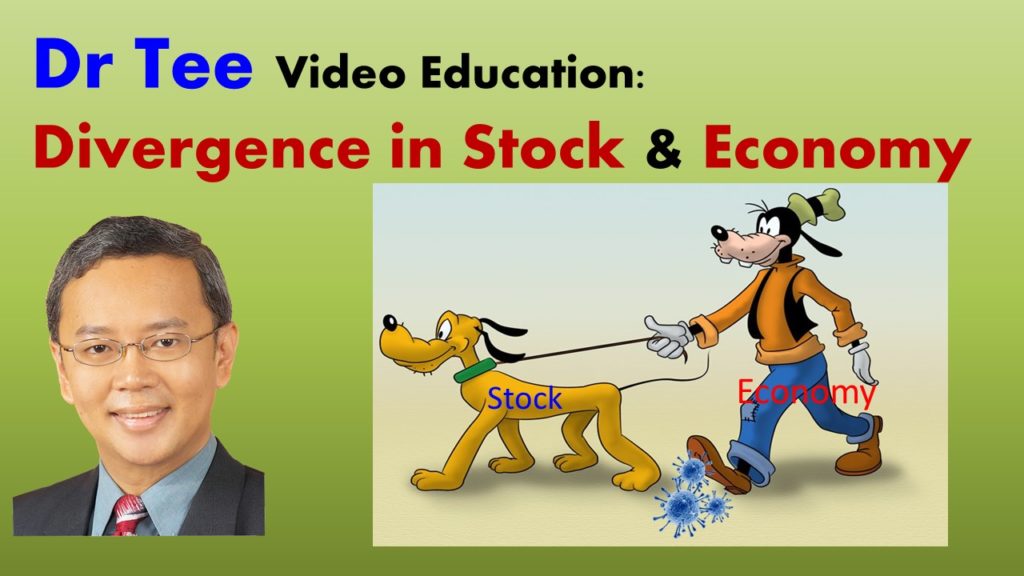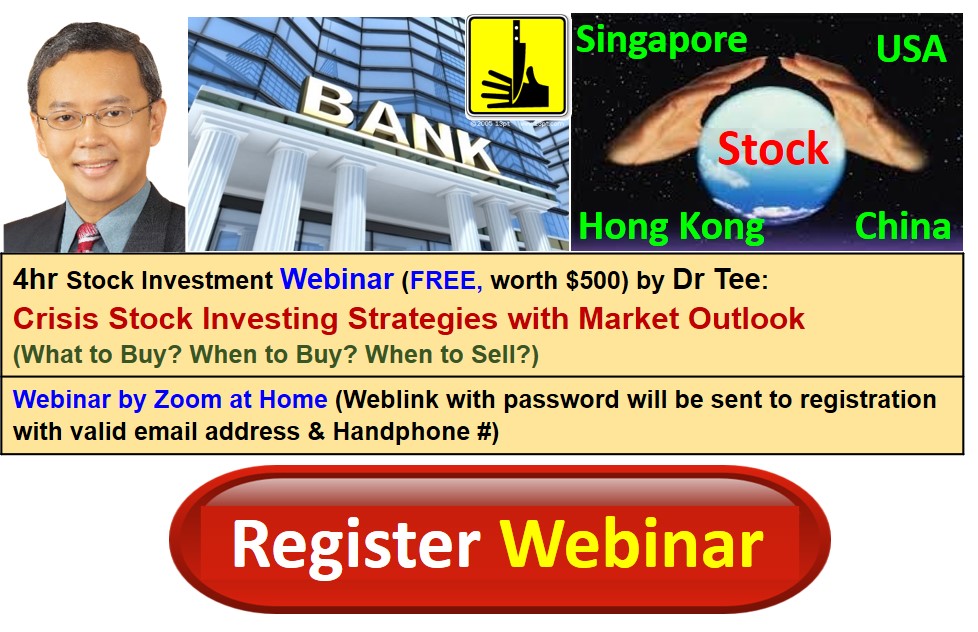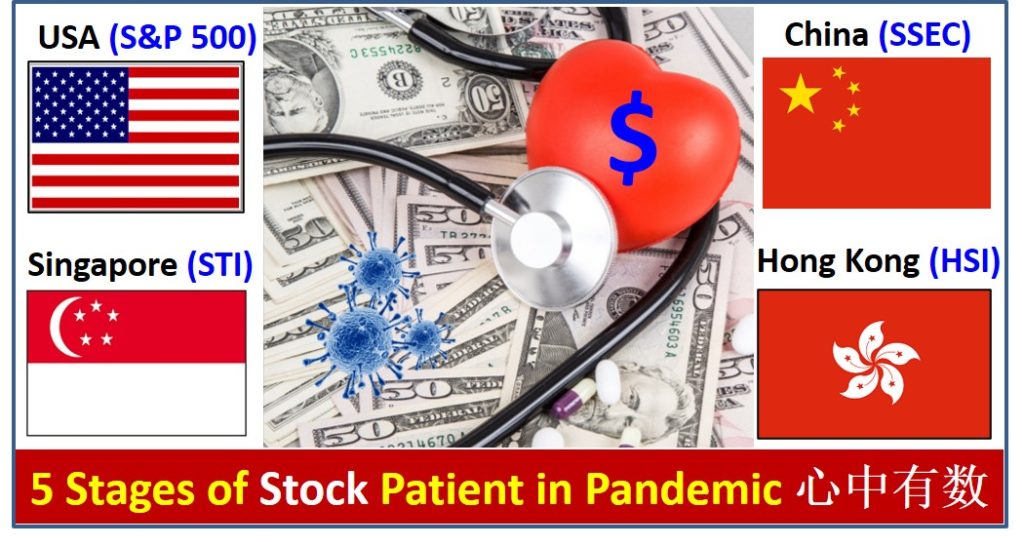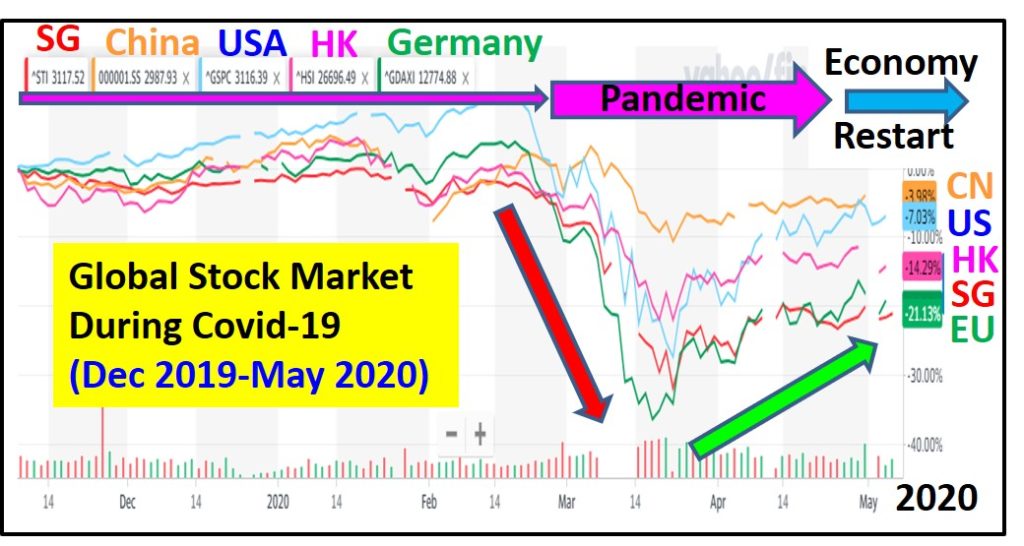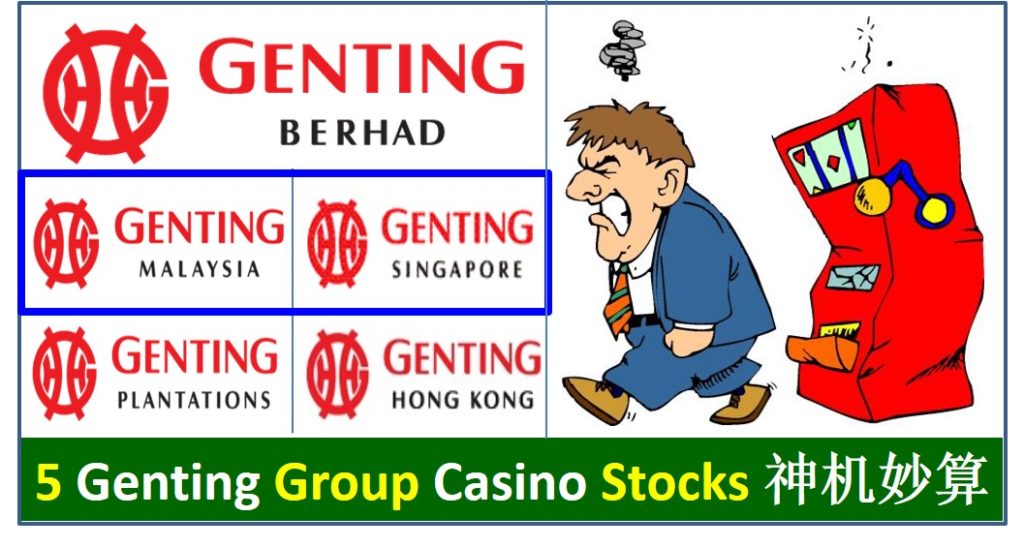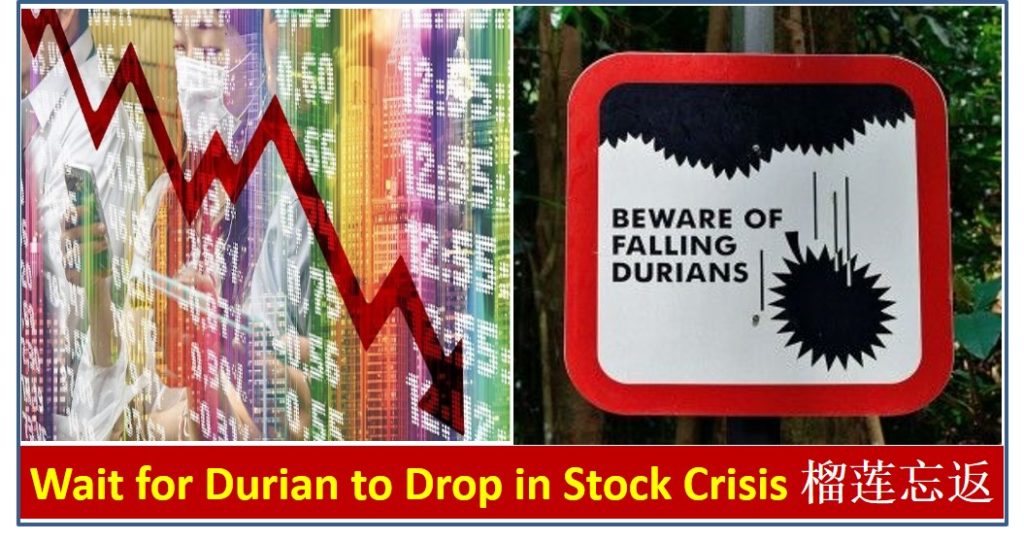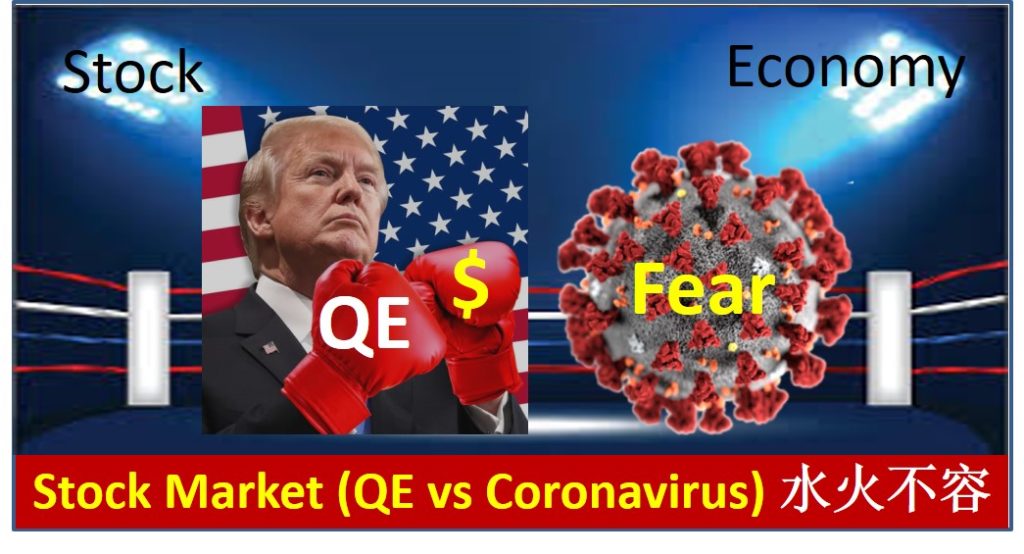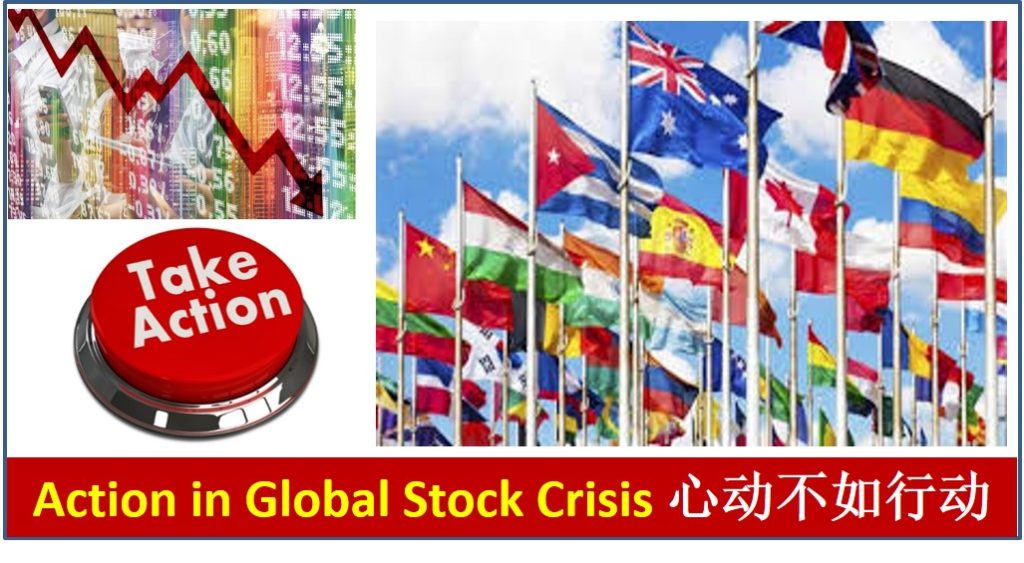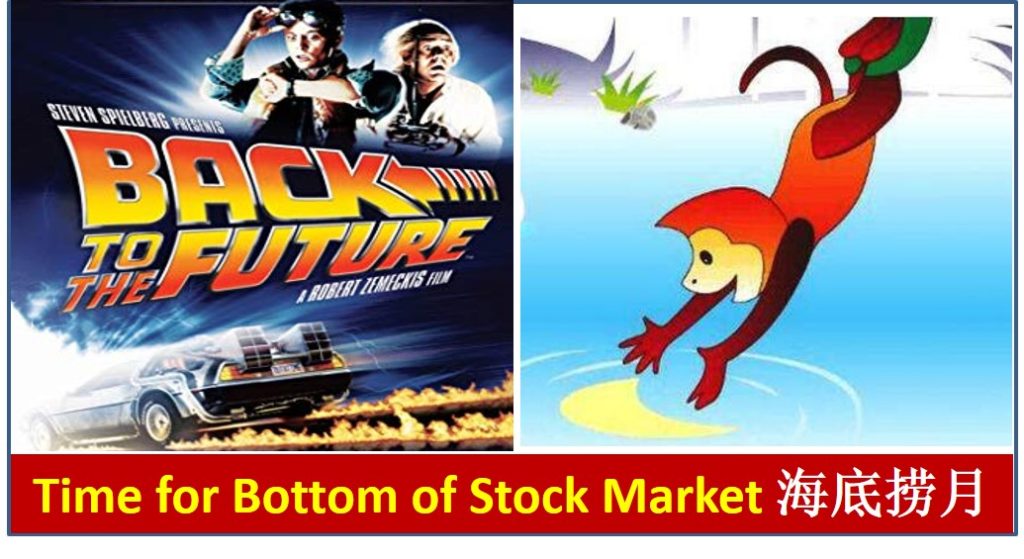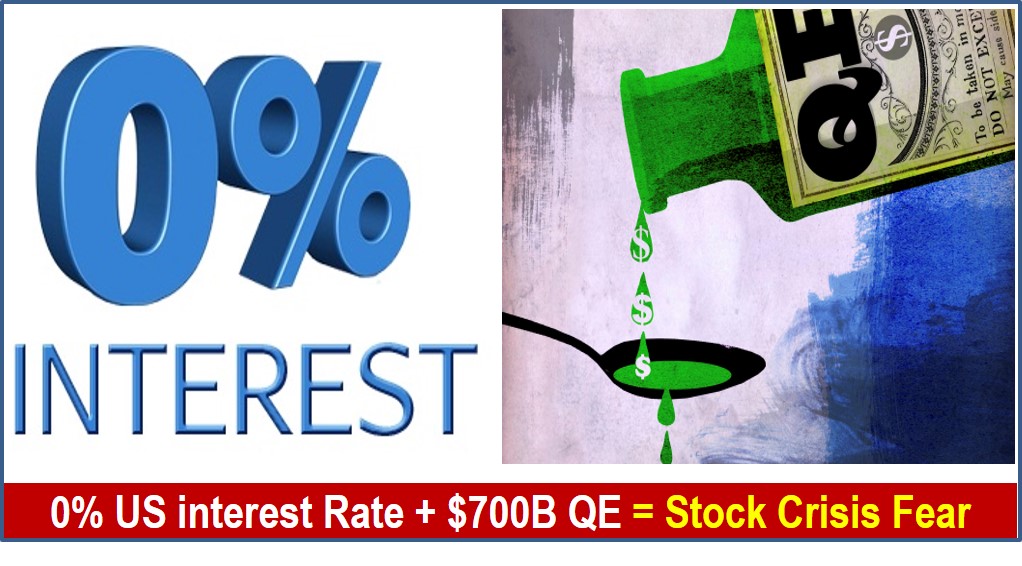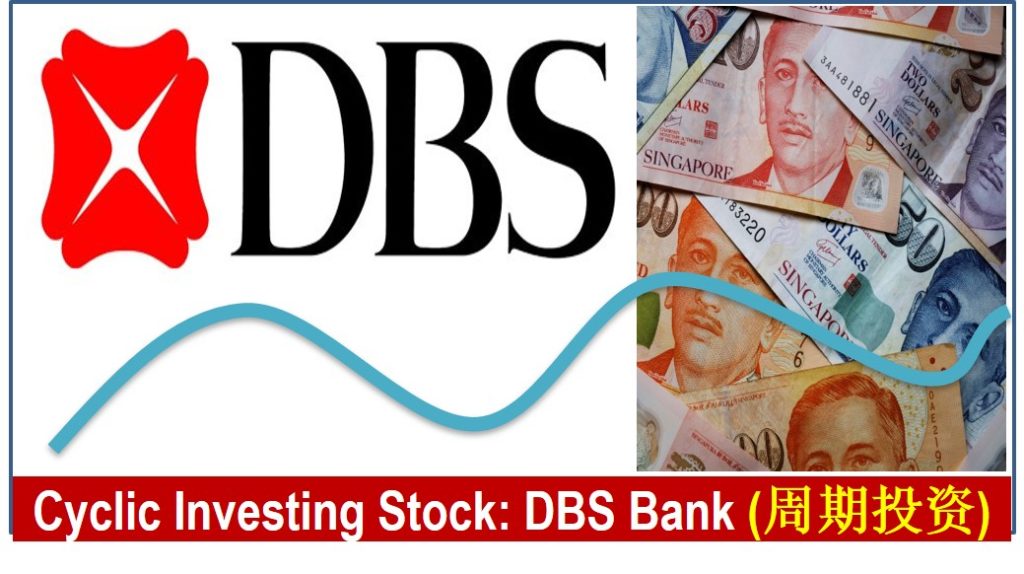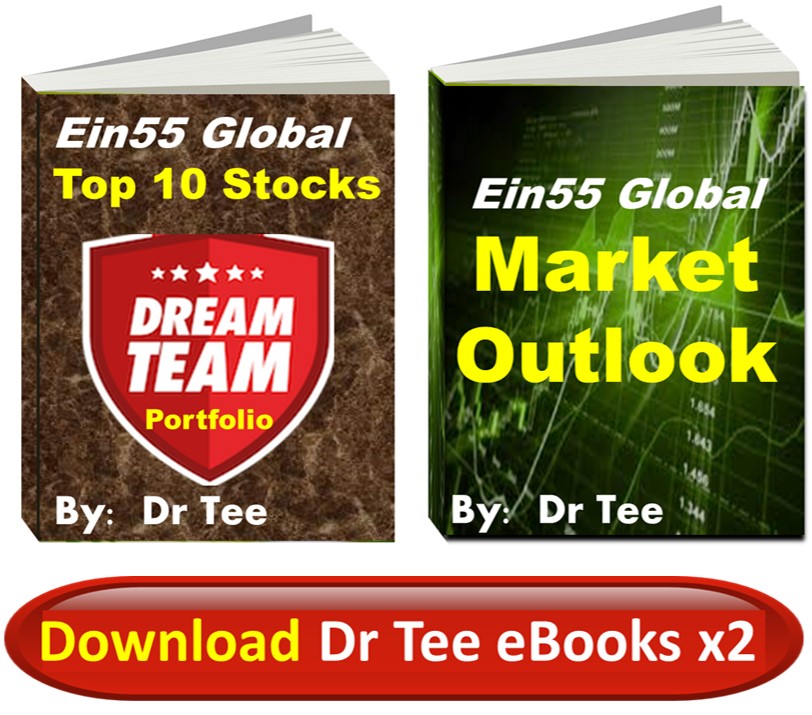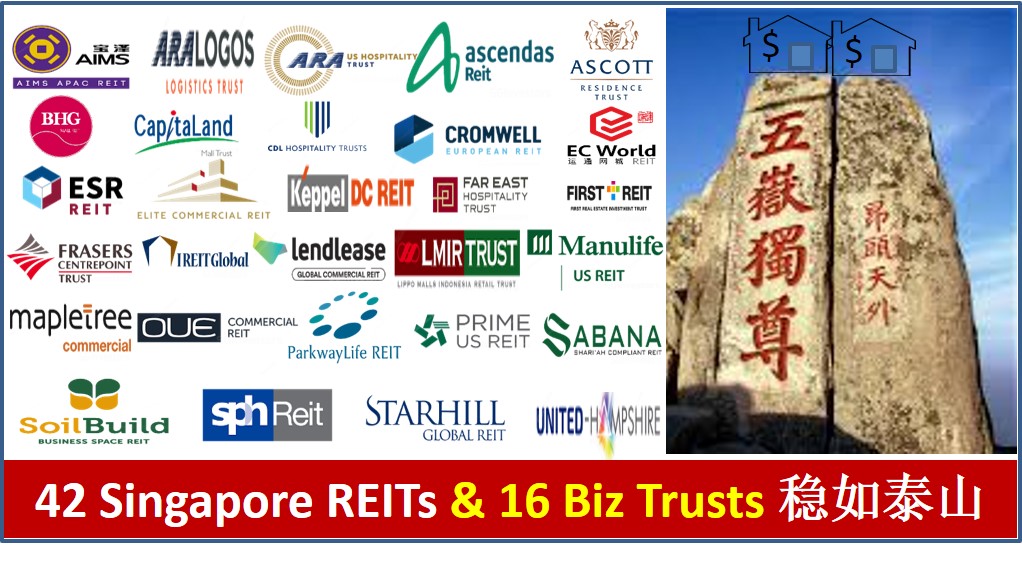
Singapore REITs are popular investment for passive income through stable dividend stocks. In this article, you will learn on how to invest in 21 giant stocks from 42 Singapore REITs and 16 Business Trusts with 3 key strategies (Striker / Mid-fielder / Defender) in 8 categories:
1) Retail REITs
2) Office REITs
3) Industrial REITs
4) Healthcare REITs
5) Diversified REITs
6) Data Center REIT
7) Hospitality REIT
8) Business Trusts
There are 6 Singapore REITs which are also Business Trusts, so total there are 42 + 16 – 6 = 52 Singapore REITs and Business Trusts as of current stock market. Currently, out of 30 STI Index stocks, 5 are REITs. Soon, SPH (SGX: T39) with declining trading market capitalization (lower share price and/or lower trading volume) will be replaced by Mapletree Industrial Trust (SGX: ME8U) as 6th REIT of STI. CapitaMall Trust (SGX: C38U) will be merged with CapitaCom Trust (SGX: C61U) to form new CapitaLand Integrated Commercial Trust (CICT) Reit, therefore free up 1 seat in 30 STI. In near future, 5 reserve list of STI are all REITs or Business Trust:
Keppel DC Reit (SGX: AJBU), Suntec Reit (SGX: T82U), NetLink NBN Trust (SGX: CJLU), Frasers Logistics & Industrial Trust (SGX: BUOU) and Keppel Reit (SGX: K71U).
It implies at least 10 out of future 30 STI components would be from REITs and Business Trust. Future STI ETF (SGX: ES3)/(SGX: G3B) would be a more defensive investing tool, more dividend income but growth could be limited due to nature of Singapore REITs.
Diversification through REITs ETF (SGX: FSTAS8670) may not be a good strategy as not all stocks selected by index or fund manager are considered giant REITs (based on Dr Tee criteria) and systematic risk such as global financial crisis could potentially correct the REITs prices by more than 50% (eg. 70% price drop in 2008-2009 subprime crisis and about 40% correction in 2020 Covid-19 crisis) if an investor simply buys and hold for long term.
By law, REITs have to redistribute 90% taxable income (from property rental income) back to shareholders in the form of dividend. Therefore, a retail investor could play the role of landlord of giant property (shopping malls, commercial buildings, hospitals, hotels, etc) with minimal capital (could be less than $1000), saving the hassle to buy/sell property (REIT manager would help), no need to deal with tenants or operations (property manager would help). Singapore REITs are exempted from corporate tax, therefore an Singapore investor could gain extra 1-2% rental or dividend yield compared with overseas REITs.
Business Trust is not limited to property rental, could be any form of business and even a company has good track record of dividend payment, it is not a legal obligation to do pay dividend in future, especially when there is a potential business crisis (eg. Covid-19) which needs more cash reserve. Therefore, from the perspective of a dividend stock investor, Singapore REITs are more preferred than Business Trusts for passive income generation.
However, a REIT investor has to buy the right REIT which could grow in rental business (most important action), aligning own personality with 3 possible strategies:
1) Striker – trading or crisis investing (Buy Low Sell High), mainly for capital gains
2) Mid-fielder – medium term investing, mainly for capital gains (dividend income as bonus)
3) Defender – long term investing, mainly for dividend income (capital gains as bonus)
After confirming a REIT / Business Trust is a giant, then investor has to master the investment clock (When to Buy / Sell), depending on type of REITs. The best time to invest in a defensive REIT is usually during global stock crisis (with condition that the rental business is not significantly affected) which could maximize both the dividend yield and also higher upside for capital gains.
Below are all the 52 Singapore REITs and Business Trusts based on the last price traded (4 June 2020), sorted by type of REITs with details of 3 key strategies (Striker / Mid-fielder / Defender) and 3 critical Fundamental Criteria:
1) ROE (a basic criteria for REIT, eg. ROE > 0% to ensure business not losing money),
2) Dividend Yield, DY (a criteria for dividend stocks, eg. DY > 3 – 5%, depending on strategy),
3) Price-to-Book (PB) ratio, Price/NAV (a bonus for REIT is undervalue, eg. PB < 1).
| No | Ticker | ROE | Dividend Yield (%) | PB = Price /NAV | Type | Strategy |
| 1 | BHG Retail Reit (SGX: BMGU) | 11.4 | 6.4 | 0.7 | Retail | |
| 2 | CapitaLand Mall Trust (SGX: C38U) | 9.0 | 5.7 | 1.0 | Retail | Defender |
| 3 | CapitaLand Retail China Trust (SGX: AU8U) | 8.8 | 7.3 | 0.9 | Retail | Defender |
| 4 | Frasers Centrepoint Trust (SGX: J69U) | 8.3 | 4.7 | 1.2 | Retail | Defender |
| 5 | Lippo Malls Trust (SGX: D5IU) | -0.7 | 15.4 | 0.7 | Retail | |
| 6 | Sasseur Reit (SGX: CRPU) | 11.8 | 8.4 | 0.8 | Retail | |
| 7 | SPH REIT (SGX: SK6U) | 6.1 | 5.9 | 0.9 | Retail | |
| 8 | Starhill Global Reit (SGX: P40U) | 3.4 | 8.2 | 0.6 | Retail | Defender |
| 9 | United Hampshire US Reit (SGX: ODBU) | 4.1 | – | 0.789 | Retail | |
| 10 | CapitaLand Commercial Trust (SGX: C61U) | 6.0 | 5.0 | 1.0 | Office | Defender |
| 11 | Elite Commercial REIT GBP (SGX: MXNU) | – | – | 1.2 | Office | |
| 12 | IREIT Global (SGX: UD1U) | 19.4 | 7.7 | 0.9 | Office | Mid-fielder |
| 13 | Keppel Pacific Oak US REIT (SGX: CMOU) | 9.3 | 8.4 | 0.9 | Office | |
| 14 | Keppel Reit (SGX: K71U) | 2.6 | 4.8 | 0.9 | Office | Defender |
| 15 | ManulifeReit USD (SGX: BTOU) | 3.8 | 7.2 | 1.0 | Office | Mid-fielder |
| 16 | OUE Commercial Reit (SGX: TS0U) | 3.5 | 8.0 | 0.7 | Office | |
| 17 | Prime US ReitUSD (SGX: OXMU) | 4.1 | 3.5 | 1.0 | Office | |
| 18 | AIMS APAC Reit (SGX: O5RU) | 9.0 | 7.6 | 0.9 | Industrial | |
| 19 | ARA LOGOS Logistics Trust (SGX: K2LU) | -2.1 | 9.8 | 1.0 | Industrial | |
| 20 | Ascendas Reit (SGX: A17U) | 7.4 | 4.4 | 1.5 | Industrial | Defender |
| 21 | EC World Reit (SGX: BWCU) | 9.5 | 8.4 | 0.8 | Industrial | |
| 22 | ESR-REIT (SGX: J91U) | -0.1 | 9.7 | 1.0 | Industrial | |
| 23 | Mapletree Industrial Trust (SGX: ME8U) | 10.3 | 4.6 | 1.6 | Industrial | Mid-fielder |
| 24 | Mapletree Logistics Trust (SGX: M44U) | 8.2 | 4.2 | 1.5 | Industrial | Defender |
| 25 | Sabana Reit (SGX: M1GU) | 3.5 | 7.8 | 0.7 | Industrial | |
| 26 | ARA Hospitality Trust USD (SGX: XZL) | 2.2 | 10.1 | 0.5 | Hospitality | |
| 27 | Ascott Trust (SGX: HMN) | 5.1 | 7.2 | 0.8 | Hospitality | Striker |
| 28 | CDL Hospitality Trust (SGX: J85) | 6.1 | 8.2 | 0.7 | Hospitality | Striker |
| 29 | Eagle Hospitality Trust USD (SGX: LIW) | 18.2 | 25.3 | 0.2 | Hospitality | |
| 30 | Far East Hospitality Trust (SGX: Q5T) | 3.6 | 7.2 | 0.6 | Hospitality | |
| 31 | Frasers Hospitality Trust (SGX: ACV) | 3.4 | 8.9 | 0.7 | Hospitalit | |
| 32 | First Reit (SGX: AW9U) | 5.7 | 12.1 | 0.7 | Healthcare | Striker |
| 33 | ParkwayLife Reit (SGX: C2PU) | 10.4 | 3.8 | 1.8 | Healthcare | Mid-fielder |
| 34 | Cromwell Reit EUR (SGX: CNNU) | 8.3 | 8.9 | 0.9 | Diversified | |
| 35 | Cromwell Reit SGD (SGX: CSFU) | 8.3 | 8.5 | 0.9 | Diversified | |
| 36 | Frasers Logistics & Commercial Trust (SGX: BUOU) | 9.8 | 3.9 | 1.9 | Diversified | Mid-fielder |
| 37 | Lendlease Reit (SGX: JYEU) | – | – | 0.9 | Diversified | |
| 38 | Mapletree Commercial Trust (SGX: N2IU) | 9.4 | 3.8 | 1.2 | Diversified | Mid-fielder |
| 39 | Mapletree North Asia Commercial Trust (SGX: RW0U) | 2.6 | 7.7 | 0.7 | Diversified | Defender |
| 40 | Soilbuild Business Space Reit (SGX: SV3U) | 4.0 | 10.2 | 0.7 | Diversified | |
| 41 | Suntec Reit (SGX: T82U) | 6.5 | 6.0 | 0.7 | Diversified | |
| 42 | Keppel DC Reit (SGX: AJBU) | 5.7 | 3.1 | 2.2 | Data Center | Mid-fielder |
| 43 | Accordia Golf Trust (SGX: ADQU) | -17.0 | 6.4 | 0.8 | Business Trust | |
| 44 | Ascendas India Trust (SGX: CY6U) | 18.2 | 4.6 | 1.3 | Business Trust | Defender |
| 45 | Asian Pay Tv Trust (SGX: S7OU) | 1.8 | 7.4 | 0.2 | Business Trust | |
| 46 | Dasin Retail Trust (SGX: CEDU) | -1.9 | 8.2 | 0.6 | Business Trust | |
| 47 | FSL Trust (SGX: D8DU) | 5.0 | 29.3 | 0.5 | Business Trust | |
| 48 | HPH Trust SGD (SGX: P7VU) | 2.0 | 11.9 | 0.3 | Business Trust | |
| 49 | HPH Trust USD (SGX: NS8U) | 2.0 | 12.6 | 0.3 | Business Trust | |
| 50 | Keppel Infrastructure Trust (SGX: A7RU) | 2.9 | 7.0 | 2.1 | Business Trust | |
| 51 | NetLink NBN Trust (SGX: CJLU) | 2.7 | 5.0 | 1.4 | Business Trust | Mid-fielder |
| 52 | RHT HealthTrust (SGX: RF1U) | – | 145.5 | 0.9 | Business Trust |
The risk (and also opportunity) of REITs are cyclic stock prices, therefore each global stock crisis could be good opportunity to Buy Low for giant Defender REITs, maximizing dividend yields with multiple entries if diversification is needed during uncertain Global Financial Crisis. For Mid-fielder stocks, alignment with price trends are important for trading (momentum and cyclic / swing trading). Covid-19 pandemic would disrupt the stable distribution of rental income for some REITs (eg. Retail, Office, Industrial, Hospitality) with reduced or delayed dividend for 6-12 months but it has less impact on longer term investors who could hold longer than 1 year.
We may group 52 Singapore REITs and Business Trusts in the following 8 categories with 21 selected giant stocks in 3 main roles (Striker / Mid-fielder / Defender).
1) Retail REITs
There are 9 Retail REITs listed in Singapore (some with overseas business, eg. in China, Hong Kong and US):
BHG Retail Reit (SGX: BMGU), CapitaLand Mall Trust (SGX: C38U), CapitaLand Retail China Trust (SGX: AU8U), Frasers Centrepoint Trust (SGX: J69U), Lippo Malls Trust (SGX: D5IU), Sasseur Reit (SGX: CRPU), SPHREIT (SGX: SK6U), Starhill Global Reit (SGX: P40U), United Hampshire US Reit (SGX: ODBU).
Retail REITs are usually cyclic in nature, tenants occupancy rate and rental rate mainly follow economic cycles and strength of local economy. 4 Giant Retail REITs are good choices as Defenders to collect dividend income: CapitaLand Mall Trust (SGX: C38U), CapitaLand Retail China (SGX: AU8U), Frasers Centrepoint Trust (SGX: J69U), Starhill Global Reit (SGX: P40U).
2) Office REITs
There are 8 Office or Commercial REITs listed in Singapore (some with overseas business, eg. in US, UK and Europe):
CapitaLand Commercial Trust (SGX: C61U), Elite Commercial REIT (SGX: MXNU), IREIT Global (SGX: UD1U), Keppel Pacific Oak US REIT (SGX: CMOU), Keppel Reit (SGX: K71U), Manulife Reit (SGX: BTOU), OUE Commercial Reit (SGX: TS0U), Prime US Reit (SGX: OXMU).
Office REITs are usually cyclic in nature, tenants occupancy rate and rental rate mainly follow economic cycles and strength of local economy. 4 Giant Office REITs are good choices, 2 as Defenders to collect dividend income: CapitaLand Commercial Trust (SGX: C61U) and Keppel Reit (SGX: K71U) and 2 as Mid-fielders (both capital gains and dividend income in medium term trading): Manulife Reit (SGX: BTOU) and IREIT Global (SGX: UD1U).
3) Industrial REITs
There are 8 Industrial REITs listed in Singapore (some with overseas business, eg. in China and Asia Pacific):
AIMS APAC Reit (SGX: O5RU), ARA LOGOS Logistics Trust (SGX: K2LU), Ascendas Reit (SGX: A17U), EC World Reit (SGX: BWCU), ESR-REIT (SGX: J91U), Mapletree Industrial Trust (SGX: ME8U), Mapletree Logistics Trust (SGX: M44U), Sabana Reit (SGX: M1GU).
Industrial REITs are usually cyclic in nature, tenants occupancy rate and rental rate mainly follow economic cycles and strength of local economy. 3 Giant Industrial REITs are good choices, 2 as Defenders to collect dividend income: Ascendas Reit (SGX: A17U) and Mapletree Logistics Trust (SGX: M44U) and 1 as Mid-fielder (both capital gains and dividend income in medium term): Mapletree Industrial Trust (SGX: ME8U).
4) Healthcare REITs
There are only 2 Healthcare REITs listed in Singapore (with local and overseas business, eg. in Indonesia, South Korea, Malaysia, Japan and), both are giant stocks:
First Reit (SGX: AW9U) as striker and ParkwayLife Reit (SGX: C2PU) as Mid-fielder.
Healthcare REITs are usually more defensive in rental business due to very long term agreement signed with tenants (hospitals which need stability in operation). First Reit used to be a Mid-fielder with strong growth but investors confidence are affected with bearish outlook of sponsor, Lippo Group, therefore new role as a Striker could be more suitable for crisis stock investing. Parkwaylife REIT is much more stable with support of strong sponsor, IHH Healthcare (SGX: Q0F) but dividend yield is limited, therefore more suitable as a Mid-fielder.
5) Diversified REITs
There are 8 Diversified REITs listed in Singapore (some with overseas business, eg. in China, Asia Pacific and Europe):
Cromwell Reit EUR (SGX: CNNU) / Cromwell Reit SGD (SGX: CSFU), Frasers Logistics & Commercial Trust (SGX: BUOU), Lendlease Reit (SGX: JYEU), Mapletree Commercial Trust (SGX: N2IU), Mapletree North Asia Commercial Trust (SGX: RW0U), Soilbuild Business Space REIT (SGX: SV3U), Suntec Reit (SGX: T82U).
Diversified REITs have different types of REITs within the REIT portfolio (eg. Office / industrial / retail, some are integrated of smaller REITs, eg. Frasers REITs, through Merging & Acquisition), therefore usually cyclic in nature, tenants occupancy rate and rental rate mainly follow economic cycles and strength of local economy. 3 Giant Industrial REITs are good choices, 1 as defender to collect dividend income: Mapletree NAC Trust (SGX: RW0U) and 2 as Mid-fielders (both capital gains and dividend income in medium term): Frasers L&C Trust (SGX: BUOU) and Mapletree Commercial Trust (SGX: N2IU.
6) Data Center REIT
There is only 1 Data Center REIT in Singapore (with business locally and globally), also a Mid-fielder Giant Stock: Keppel DC Reit (SGX: AJBU).
Technically, Mapletree Industrial Trust, MIT (SGX: ME8U) has partial business in Data Center as MIT has 40% ownership (another 60% by parent company, Mapletree Investment) of Mapletree Redwood Data Centre Trust (MRDCT) which has 14 data centers in US since 2017. So far, Mapletree group (Temasek as sponsor) has 4 REITs listed sequentially over the past decade. So, there is no surprise if MRDCT may be listed in future when business is more stable one day. Currently, an investor may invest indirectly through MIT, which is an Industrial REIT including partial business in Data Centers.
Data Center REITs are usually more defensive due to longer term agreement signed with tenants (could be local government and big companies with confidential customer identities due to sensitive nature of database) which may view stability and security as more important factors than cost of rental. With popularity in internet (driven further by 5G) and tremendous growth in database required globally, demand for data centers at safer locations / countries would be increasing. Both Keppel DC Reit and MIT are younger REITs, more suitable to position as Mid-fielders, aiming mainly for capital gains (dividend is only a bonus), may evolve into growth investing in future.
7) Hospitality REIT
There are 6 Hospitality REITs (some with business overseas, eg. global hotels chain) which also have Business Trust to form Stapled Securities due to requirement of business model:
ARA Hospitality Trust USD (SGX: XZL), Ascott Trust (SGX: HMN), CDL Hospitality Trust (SGX: J85), Eagle Hospitality Trust USD (SGX: LIW), Far East Hospitality Trust (SGX: Q5T), Frasers Hospitality Trust (SGX: ACV)
Hospitality REITs are mostly considered as crisis sector (especially for hotel / resort business) due to Covid-19 pandemic, few international visitors during this period. Without strong sponsor, a REIT could be in trouble. Eagle HTrust is a good example, stock is suspended after less than 1 year of IPO (about 80% capital loss for a stock investor), with big losses in business, default of loan and additional sell down during Covid-19 crisis as last straw which breaks the camel’s back. Usually for a young IPO stock without stable business record, there is always a risk that business may not be sustainable. So, a proven REIT with higher price could be more valuable than a young REIT with lower price.
2 Giant Hospitality REITs may be considered, both as Strikers (crisis investing stocks) as they are supported by strong sponsors despite weak business during Covid-19: Ascott Trust (SGX: HMN) is supported by CapitaLand (SGX: C31), while CDL HTrust (SGX: J85) is supported by City Development (SGX: C09). An investor may need to wait for quarterly or semi-annual financial report to understand the real impact of Covid-19 during Q1-Q2/2020 on Hospitality REITs. There are other non-crisis REITs (or limited impact of Covid-19) which an investor may consider, there is no need to take risk on Striker stocks if it goes against the personality of investors who may aim for defensive investing with stable dividend income.
8) Business Trusts
There are 10 pure Business Trusts listed in Singapore which dividend payments are not protected by law:
Accordia Golf Trust (SGX: ADQU), Ascendas India Trust (SGX: CY6U), Asian Pay Tv Trust (SGX: S7OU), Dasin Retail Trust (SGX: CEDU), FSL Trust (SGX: D8DU), HPH Trust SGD (SGX: P7VU), HPH Trust USD (SGX: NS8U), Keppel Infrastructure Trust (SGX: A7RU), NetLink NBN Trust (SGX: CJLU), RHT Health Trust (SGX: RF1U).
There are a few weak Business Trusts with very high dividend yield which are potential value traps, eg. FSL Trust (29% dividend yield). Dividend yield is always computed based on past dividend record and a high number could be derived due to weak business with very bearish share price. Buy Low may not able to Sell High for a junk stock as share prices would become lower. So, high dividend yield has to combine with a giant dividend stock or giant REIT (either Mid-fielder or Defender strategy), following Dr Tee criteria.
2 Giant Business Trusts with strong sponsors may be considered: Ascendas India Trust (SGX: CY6U) as a Defender (property trust in India) is supported by CapitaLand (SGX: C31), while NetLink NBN Trust (SGX: CJLU) as a Mid-fielder is supported by Singtel (SGX: Z74). Ascendas-iTrust is still property related, therefore even it is a Business Trust, asset quality is high. However for NetLink Trust, it is based on owner and operator of Singapore Fiber Network (prices regulated by authority, a form of monopoly) which technology may evolve in future, eg, towards 5G. So, close review of future technology and monitoring of financial performance are required. Therefore, young technology Business Trust of NetLink Trust, is more suitable for role as a Mid-fielder.
=====================================
There are 140 Property Stocks in Singapore excluding 52 REITs and Business Trusts (investor has to focus only on giant stocks for investing):
3Cnergy (SGX: 502), A-Smart (SGX: BQC), AEI^ (SGX: AWG), AIMS Property (SGX: BVP), APAC Realty (SGX: CLN), Abterra (SGX: L5I), Acromec (SGX: 43F), Amara (SGX: A34), Amcorp Global (SGX: S9B), AnnAik (SGX: A52), Astaka (SGX: 42S), BBR (SGX: KJ5), BRC Asia (SGX: BEC), BlackGoldNatural (SGX: 41H), Boldtek (SGX: 5VI), Bonvests (SGX: B28), Boustead (SGX: F9D), Boustead Projects (SGX: AVM), Bukit Sembawang (SGX: B61), Bund Center (SGX: BTE), CSC (SGX: C06), CapitaLand (SGX: C31), Casa (SGX: C04), Chemical Industries (SGX: C05), China Great Land (SGX: D50), China International (SGX: BEH), China Real Estate (SGX: 5RA), China Yuanbang (SGX: BCD), Chip Eng Seng (SGX: C29), City Development (SGX: C09), DISA (SGX: 532), Debao Property (SGX: BTF), ETC Singapore (SGX: 1C0), Edition (SGX: 5HG), EnGro Corporation (SGX: S44), Fraser and Neave F&N (SGX: F99), Far East Orchard (SGX: O10), Figtree (SGX: 5F4), First Sponsor (SGX: ADN), Fragrance (SGX: F31), Frasers Property (SGX: TQ5), GYP Properties (SGX: AWS), Gallant Venture (SGX: 5IG), Golden Energy (SGX: AUE), Goodland (SGX: 5PC), GuocoLand (SGX: F17), HL Global Enterprises (SGX: AVX), Hatten Land (SGX: PH0), Heeton (SGX: 5DP), Hiap Hoe (SGX: 5JK), Hiap Seng (SGX: 510), Ho Bee Land (SGX: H13), Hock Lian Seng (SGX: J2T), Hong Fok (SGX: H30), Hong Lai Huat (SGX: CTO), Hong Leong Asia (SGX: H22), Hongkong Land USD (SGX: H78), Hor Kew (SGX: BBP), Huationg Global (SGX: 41B), Hwa Hong (SGX: H19), IPC Corp (SGX: AZA), ISOTeam (SGX: 5WF), Imperium Crown (SGX: 5HT), Jasper Investments (SGX: FQ7), KOP (SGX: 5I1), KSH (SGX: ER0), Keong Hong (SGX: 5TT), Keppel Corp (SGX: BN4), Keppel Reit (SGX: K71U), King Wan (SGX: 554), Koh Brothers (SGX: K75), Koon (SGX: 5DL), Kori (SGX: 5VC), LHN (SGX: 41O), Ley Choon (SGX: Q0X), Lian Beng (SGX: L03), Low Keng Huat (SGX: F1E), Lum Chang (SGX: L19), MMP Resources (SGX: F3V), MYP (SGX: F86), Metro (SGX: M01), OIO (SGX: KUX), OKH Global (SGX: S3N), OKP (SGX: 5CF), OneApex (SGX: 5SY), Oxley (SGX: 5UX), PSL (SGX: BLL), Pacific Century (SGX: P15), Pacific Star Development (SGX: 1C5), Pan Hong (SGX: P36), Pavillon (SGX: 596), Perennial Holdings (SGX: 40S), Pollux Properties (SGX: 5AE), PropNex (SGX: OYY), Raffles Infrastructure (SGX: LUY), Regal International (SGX: UV1), Renaissance United (SGX: I11), Rich Capital (SGX: 5G4), Roxy-Pacific (SGX: E8Z), Ryobi Kiso (SGX: BDN), SHS (SGX: 566), SLB Development (SGX: 1J0), SP Corporation (SGX: AWE), Sasseur Reit (SGX: CRPU), Second Chance (SGX: 528), Sin Heng Mach (SGX: BKA), Sinarmas Land (SGX: A26), SingHaiyi (SGX: 5H0), SingHoldings (SGX: 5IC), Singapore-eDev (SGX: 40V), Sinjia Land (SGX: 5HH), Soilbuild Construction Group (SGX: S7P), Starland (SGX: 5UA), Straits Trading (SGX: S20), Swee Hong (SGX: QF6), Sysma (SGX: 5UO), TA (SGX: PA3), TTJ (SGX: K1Q), Tai Sin Electric (SGX: 500), Thakral (SGX: AWI), Thomson Medical Group (SGX: A50), Tiong Seng (SGX: BFI), Top Global (SGX: BHO), Tosei (SGX: S2D), Transcorp (SGX: T19), Tritech (SGX: 5G9), UIC (SGX: U06), UOA (SGX: EH5), UOL (SGX: U14), USP Group (SGX: BRS), Vibrant Group (SGX: BIP), Wee Hur (SGX: E3B), Wing Tai (SGX: W05), Yanlord Land (SGX: Z25), Yeo Hiap Seng (SGX: Y03), Ying Li International (SGX: 5DM), Yoma Strategic (SGX: Z59), Yongmao (SGX: BKX), Yongnam (SGX: AXB), Yorkshine (SGX: MR8).
Not all Singapore REITs or Business Trusts are giant stocks, some could be junk stocks (eg. making losses or asking investors for reserved passive incomes through rights issues). Even for a giant stock, it requires at least yearly review with Dr Tee criteria to ensure it is still a giant stock or a change in strategy may be required (eg. crisis stock investing with Striker role if there is any potential high risk). Similarly, those stocks which are not highlighted in this article, some could be marginal giant stocks, may obtain the giant stock title one day, which worth longer term investing or trading.
Although there are 21 giant REITs and Business Trusts listed in this article (3 roles of Striker / Mid-fielder / Defender), not all stocks are suitable for everyone. A REIT investor has to further select the right type of giant stock to align with own personality to be successful in short trading, medium term investing or long term investing, knowing What to Buy, When to Buy / Sell.
Ideally, a smart investor should form a dream team stock portfolio (striker / mid-fielder / defender) with 10-20 giant stocks from over 3 sectors and 3 countries. REIT sector may contribute 1-2 stocks while it is important to diversify with more sectors (eg. Healthcare, Banking & Finance, F&B, Technology, Oil & Gas, Property / non-REIT, etc).
Since some REITs have overseas business, knowledge of Forex (eg. USD/SGD, SGD/IDR, etc) would be critical. A qualified REIT investor should also understand property market cycle, macroeconomy behavior, integrating with dividend investing or growth investing or cyclic / momentum trading.
Drop by Dr Tee free 4hr investment course to learn how to position in global giant stocks with 10 unique stock investing strategies, knowing What to Buy, When to Buy/Sell.
Learn further from Dr Tee valuable 7hr Online Course, both English (How to Discover Giant Stocks) and Chinese (价值投资法: 探测强巨股) options, specially for learners who prefer to master stock investment strategies of over 100 global giant stocks at the comfort of home.
You are invited to join Dr Tee private investment forum (educational platform, no commercial is allowed) to learn more investment knowledge, interacting with over 9000 members.

